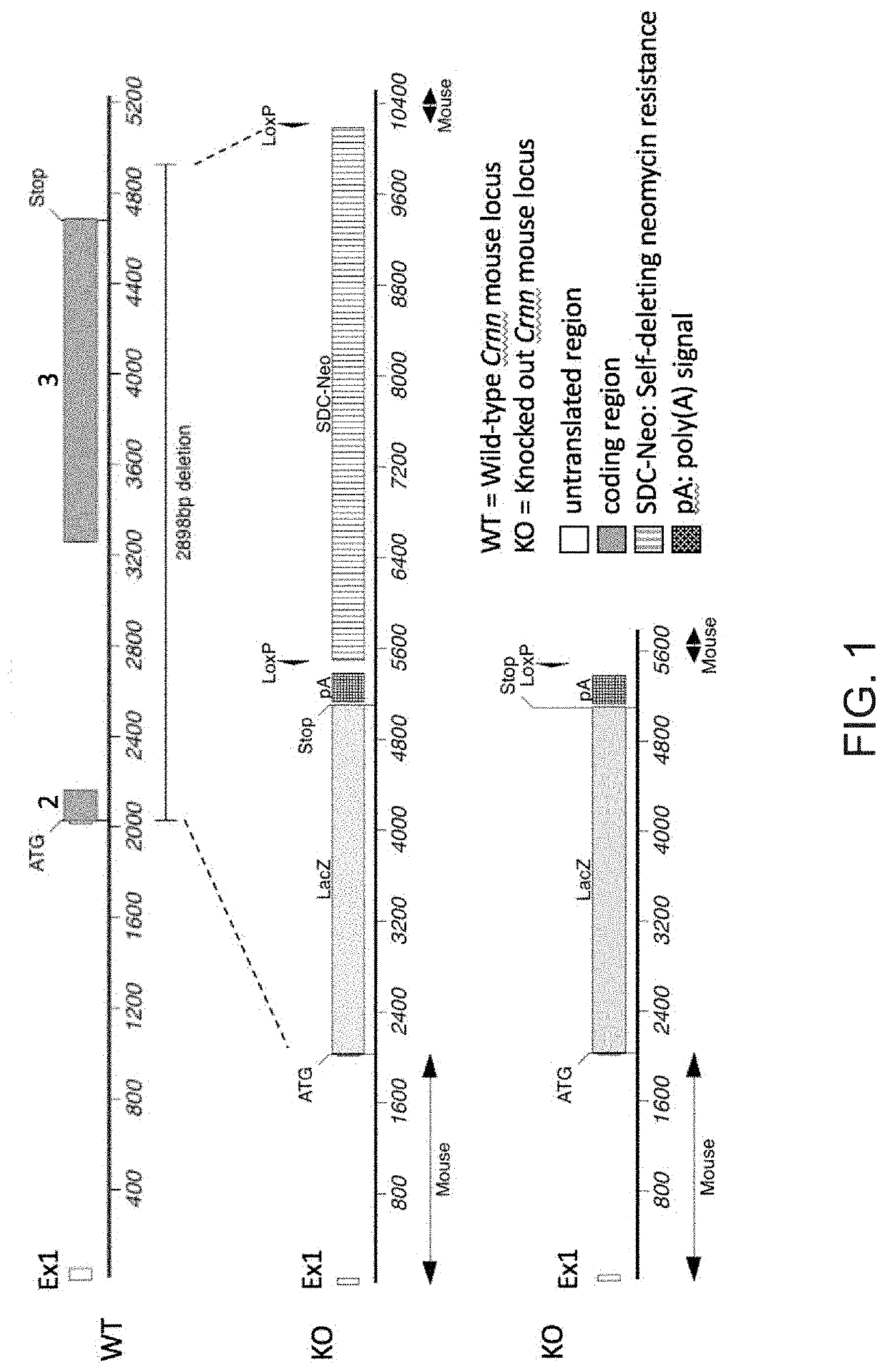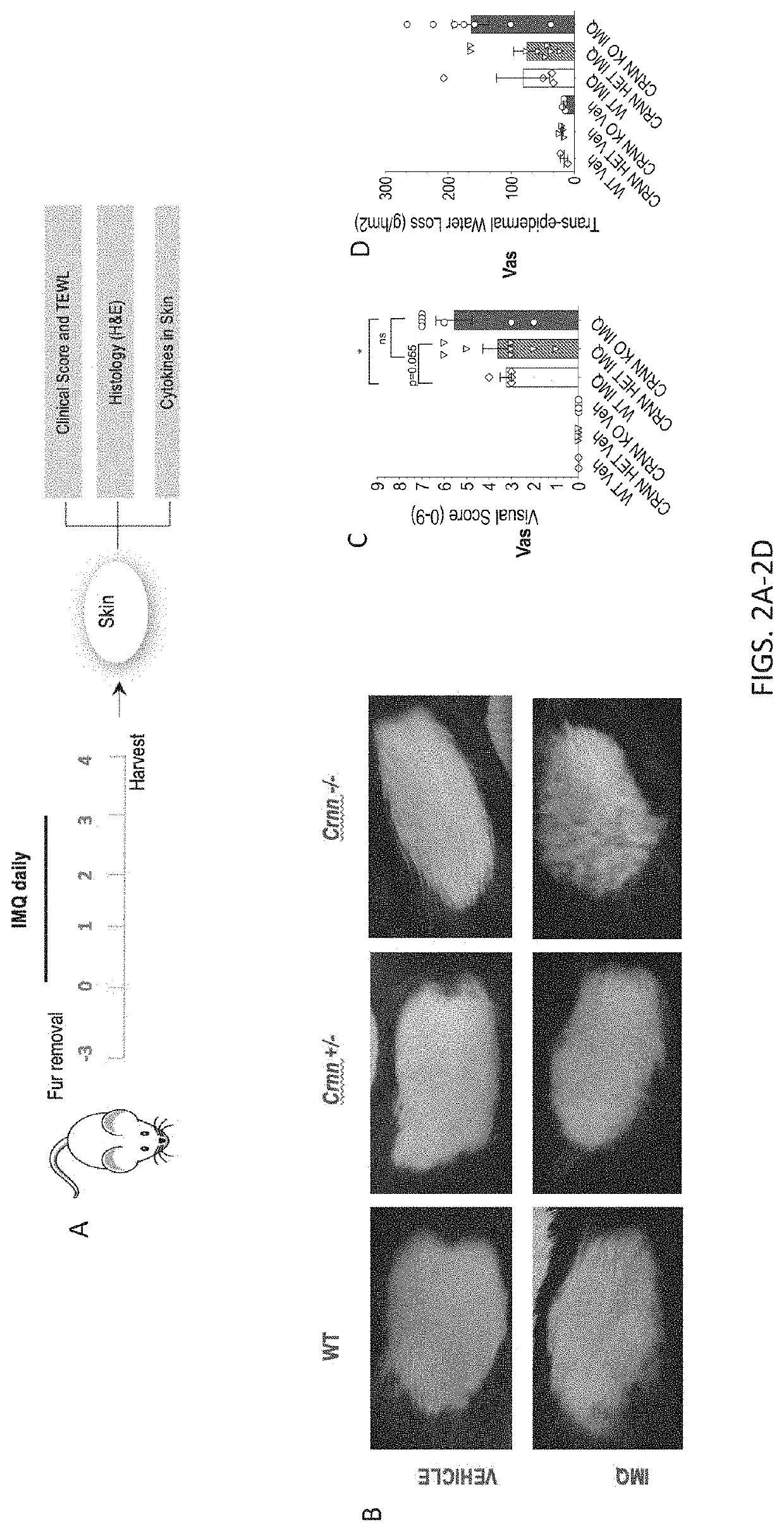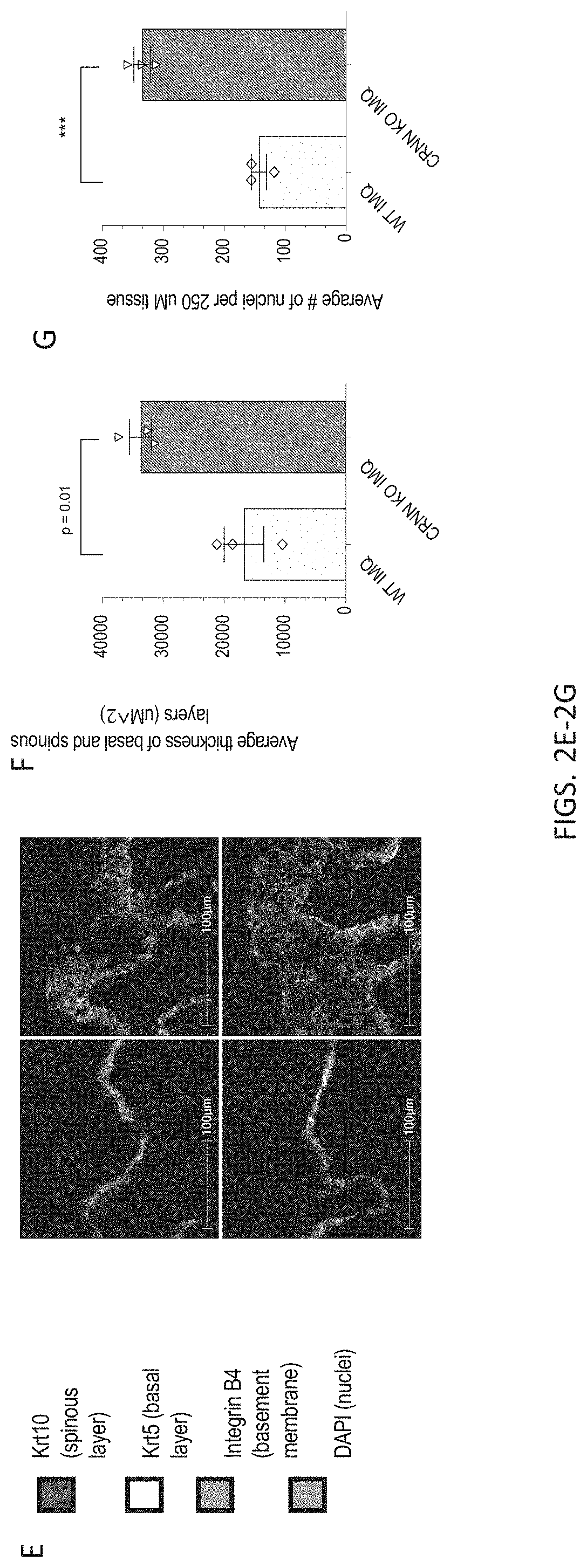Crnn loss of function rodent model
a function and rodent technology, applied in the field of genetically modified rodents, can solve the problem of lack of functional crnn polypeptides from the crnn locus
- Summary
- Abstract
- Description
- Claims
- Application Information
AI Technical Summary
Benefits of technology
Problems solved by technology
Method used
Image
Examples
example 1
, Generation of Crnn−-− Mice
[0077]A genetically engineered Crnn− / − mouse strain was created using Regeneron's VelociGene® technology (Valenzuela et al., Nat Biotechnol 2003 Jun; 21:652-59; Poueymirou et al., Nat Biotechnol. 2007 Jan; 25(1): 91-9; both of which are herein incorporated by reference in their entireties). Briefly, C57BL / 6NTac embryonic stem cells (ESC) were targeted for ablation of a portion of the Crnn locus, beginning just after the start ATG and ending 241 base pairs beyond the stop codon. A LacZ reporter module was inserted in frame with the Crnn start, followed by a fLoxed neomycin resistance cassette for selection of correctly targeted ESCs. See FIG. 1. Correctly targeted ESCs were microinjected into 8-cell embryos from Charles River Laboratories Swiss Webster albino mice, yielding F0 VelociMice® that were 100% derived from the targeted cells (Poueymirou et al. 2007, supra). These mice were subsequently bred to homozygosity and maintained in the Regeneron animal f...
example 2
, LacZ Expression in Crnn− / − Mice
[0078]Six to 8-week old mice were deeply anesthetized via. Ketamine / Xylazine (120 / 5 mg / kg) IP injection and fixed by cardiac perfusion using a 0.2% glutaraldehyde, 4% paraformaldehyde solution. Skin tissues from the head, back and ears were dissected, rinsed in PBS and post-fixed for 30 minutes in a 0.2% glutaraldehyde, 4% paraformaldehyde solution. Tissues were then washed and incubated in X-gal (1 mg / mL) staining solution for 1 to 24 hours at 37° C. After staining, tissues were rinsed in wash buffer, post-fixed in 4% paraformaldehyde, cleared in a series of 50%, 70% and 100% glycerol and imaged using an Aperio Scanscope.
[0079]Targeted, cassette-deleted heterozygous mice were bred to obtain desired genotypes. Mice that were homozygous knockout (Crnn− / −) or heterozygous knockout (Crnn+ / −) for Crnn were born in expected Mendelian ratios, had normal body weight, survived to adulthood, and displayed no overt abnormalities. To determine the expression pa...
example 3
, Crnn− / − Mice Displayed increased IMQ-Induced Skin Inflammation
Induction of Acute IMQ-Induced Inflammation
[0080]To induce acute skin inflammation, 8 months old Crnn KO (Crnn− / −), Crnn+ / − and WT female mice had their back hair shaved using hair trimmer (Oster, MiniMax, Cat# 78049-100) and skin depilated with 0.5 g Veet hair removal gel three days prior to IMQ cream application. A daily topical dose of 62.5 mg of commercially available IMQ cream (5%) (Aldara, GM Health Care Limited, NDC 99207-206-12, lot# QJ044A) or Vaseline (CVS Pharmacy, NDC 59779-902-88) was applied on the shaved back skin of the Crnn KO (n=6) and WT (n=5) mice for four consecutive days for the induction of acute disease. A daily topical dose of 62.5 mg of Aldara translated into a daily dose of 3.125 mg of an active compound. Two or three days after the treatments, the back skin of mice started to display signs of erythema, scaling and thickening. The severity of inflammation was measured on a daily basis using an...
PUM
 Login to View More
Login to View More Abstract
Description
Claims
Application Information
 Login to View More
Login to View More - R&D
- Intellectual Property
- Life Sciences
- Materials
- Tech Scout
- Unparalleled Data Quality
- Higher Quality Content
- 60% Fewer Hallucinations
Browse by: Latest US Patents, China's latest patents, Technical Efficacy Thesaurus, Application Domain, Technology Topic, Popular Technical Reports.
© 2025 PatSnap. All rights reserved.Legal|Privacy policy|Modern Slavery Act Transparency Statement|Sitemap|About US| Contact US: help@patsnap.com



